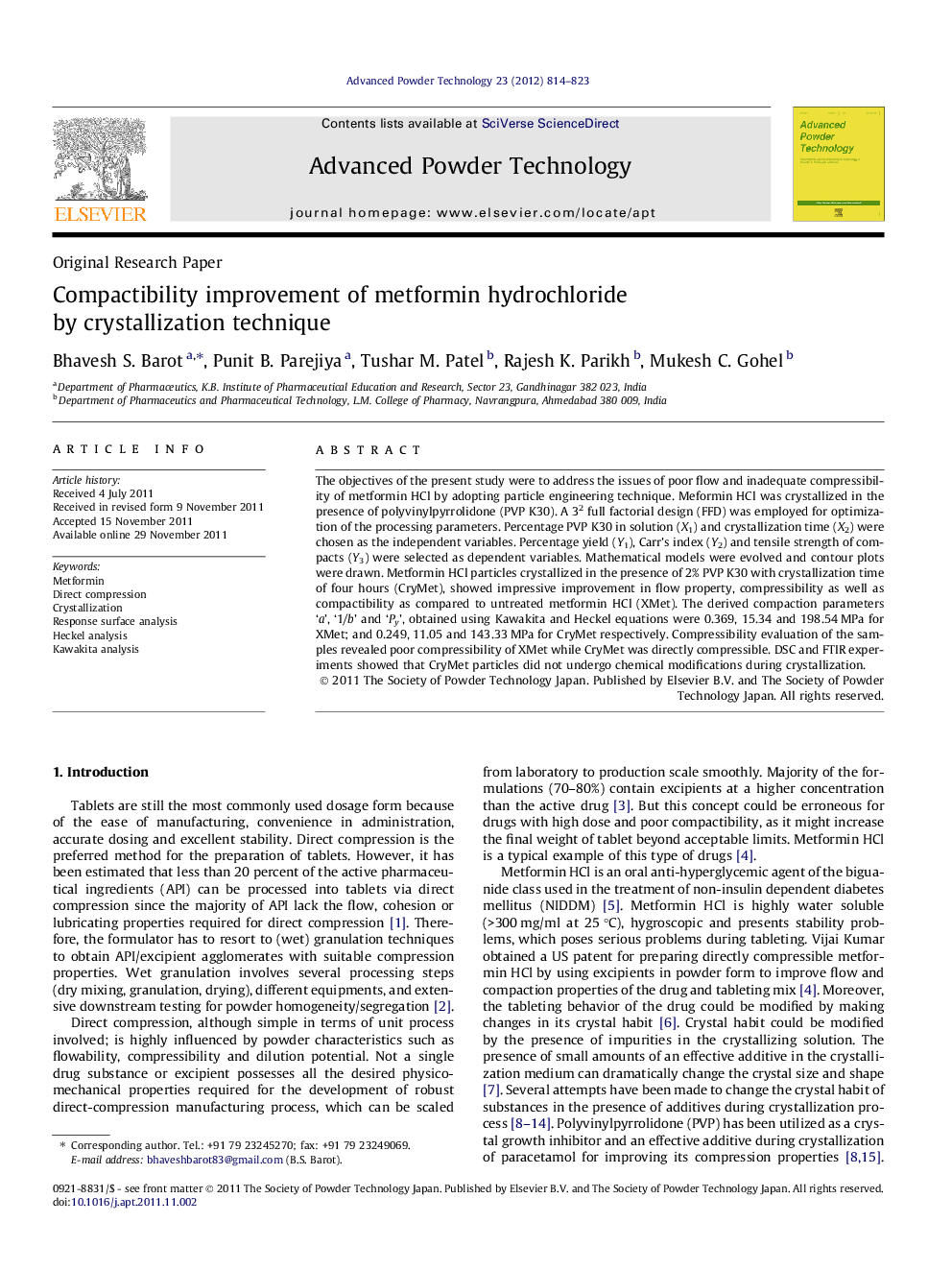| Article ID | Journal | Published Year | Pages | File Type |
|---|---|---|---|---|
| 144310 | Advanced Powder Technology | 2012 | 10 Pages |
The objectives of the present study were to address the issues of poor flow and inadequate compressibility of metformin HCl by adopting particle engineering technique. Metformin HCl was crystallized in the presence of polyvinylpyrrolidone (PVP K30). A 32 full factorial design (FFD) was employed for optimization of the processing parameters. Percentage PVP K30 in solution (X1) and crystallization time (X2) were chosen as the independent variables. Percentage yield (Y1), Carr’s index (Y2) and tensile strength of compacts (Y3) were selected as dependent variables. Mathematical models were evolved and contour plots were drawn. Metformin HCl particles crystallized in the presence of 2% PVP K30 with crystallization time of four hours (CryMet), showed impressive improvement in flow property, compressibility as well as compactibility as compared to untreated metformin HCl (XMet). The derived compaction parameters ‘a’, ‘1/b’ and ‘Py’, obtained using Kawakita and Heckel equations were 0.369, 15.34 and 198.54 MPa for XMet; and 0.249, 11.05 and 143.33 MPa for CryMet respectively. Compressibility evaluation of the samples revealed poor compressibility of XMet while CryMet was directly compressible. DSC and FTIR experiments showed that CryMet particles did not undergo chemical modifications during crystallization.
Graphical abstractFigure optionsDownload full-size imageDownload as PowerPoint slideHighlights► Metformin hydrochloride was crystallized in the presence of polyvinlypyrrolidone. ► Treated metformin was directly compressible. ► FTIR and DSC studies showed no physico-chemical changes in metformin.
